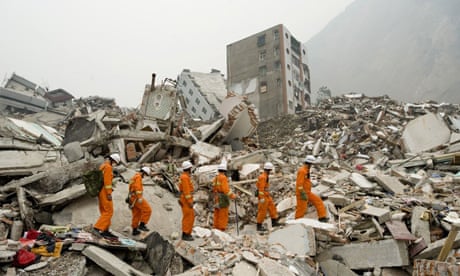The Chinese government faces a repair bill of almost $150bn (£76bn) from the Sichuan earthquake, equivalent to a fifth of its entire tax revenues for a single year, the state media reported yesterday.
Providing new houses for 3.9 million refugees, replacing schools and creating jobs for 1 million people are among the measures in an ambitious plan to rebuild the region devastated by the magnitude 8 quake, which struck on May 12.
Amid criticism that corruption and lax building standards may have contributed to the 69,225 death toll - particularly in collapsed schools - the authorities said a central focus of reconstruction would be high-quality public buildings.
"We will make the reconstruction of public service facilities such as schools and hospitals our priority ... and turn them into extremely safe and solid structures that the public can feel reassured about," stated a draft plan issued by the National Development and Reform Commission.
The commission - which steers China's economy - said an investment of 1 trillion yuan ($147bn) would be needed to pay for the plan. The sum surpasses the $120bn reconstruction bill for the 1995 Kobe earthquake in Japan. It is equal to the entire economic output of Sichuan last year and three times what Beijing spent rebuilding the capital in preparation for the Olympics.
The plan envisages building 169 hospitals and 4,432 primary and middle schools to replace collapsed structures in the three quake-hit provinces: Sichuan, Gansu and Shaanxi.
Another 2,600 schools that remained standing will be strengthened.
Under the plan, more than 3 million homeless rural families will get new houses and 860,000 apartments in the city will be built.
Welfare programmes will also be expanded to help the 1.4 million people driven into poverty by the disaster.
Job creation schemes will centre on an expanded 150 km-long urban corridor stretching from the provincial capital Chengdu to Mianyang. No timetable was set for the task, but the central government has previously set an eight-year goal to return people's lives to normal.
Even if the budget is allocated, that will be a momentous task. According to the state media, the direct economic loss from the disaster totalled 843bn yuan. Much of the damage is also impossible to fix with money or mortar.
Li Yan lost her child in a school collapse in Mianzhu city. She has heard that the government will pay 10,000 yuan per person in relief funds, but she says it will not even cover a third of the cost of rebuilding her home.
"We can't rebuild by ourselves without help," she said. "As well as a home, our biggest need is justice for my dead child, but I know that is something that nobody can help us with."
